One of my Facebook followers requested a post about the first signs of aging. She’s in her early 30’s and starting to see wrinkles. Her burning question is, what can she do to prevent further aging and turn back the clock as much as possible?
Well! That is certainly a great question! And I suspect many of you in your mid 20’s to early 30’s have the same one on your mind.
Most of what I’ll write about today can apply to any age though.
Mid 20’s-Early 30’s
What is it about turning 30 that makes everyone suddenly interested in skincare? I think we can all agree that it’s due to noticeable changes in our skin.
30 is the magic number, but some of us may start developing the first signs of aging earlier, such as fine lines and wrinkles. Our skin may not be as soft and smooth. It may have some spots. But the most obvious change is the formation of wrinkles.
A wrinkle forms when collagen is damaged. Collagen is a protein that gives skin strength and structure.
Skin also loses elasticity and resiliency (it’s ability to bounce back when pressed) over time. This is due to damaged elastin as well as a slowdown in elastin production. (By the way, it is VERY difficult to stimulate elastin production, unlike collagen, which can be stimulated by a few different methods). So what you see now is the best it’ll ever be. Take care of your elastin!
Sagging and slack skin generally develop later (after age 40). And that is due to a loss of both collagen and elastin, a loss in volume (facial fat), and a loss of bone. When bones shrink, so does your face. (There is less bone to support the skin.)
So if you’re in your mid 20’s to early 30’s and starting to show signs of aging, what you need to do first and foremost is: PROTECT YOUR SKIN. To prevent further deterioration.
Then, you can take some steps to correct the damage you already have. But at this point in your life, your energy should be focused on prevention – minimizing the damage while you still have time! If you don’t invest in prevention, all of your correction efforts will be in vain.
Skin care products and procedures can only do so much. For every 2 steps you take in prevention, skin damage (such as the sun) will set you back 4 steps. Correction will only take you back up 1 step. So you’re still at minus one (step) in terms of skin damage.
In other words, aging marches onward. You can’t stop it, you can only slow it down. One step back is still better than 4 steps back. But if you’re not focused on prevention, you’ll always be 4 steps back. Follow me?
Ok, so let’s first look at prevention strategies.
Strategies for Preventing the First Signs of Aging
1. Wear Sunscreen – DAILY
It’s really very simple. I’ve said this so many times, but it’s worth repeating over and over. Wear sunscreen every day (rain or shine) if you are serious about preserving your skin. And if you’re wondering why you have to wear it on a cloudy day, it’s because UVA (the long wavelength “aging ray”) shines the same amount every day. It also goes right through clouds and glass.
Sunscreen is the most effective way to slow down the aging. Nothing else comes close. (Unless you happen to spend the rest of your life indoors.)
Why is sunscreen so important? Because roughly 80-90% of the signs of aging are due to free radicals generated by UV light. The biggest source of UV is the sun. There are other sources of UV, such as tanning beds and UV lamps. (ps – tanning beds are TERRIBLE, worse than the sun.)
But the sun is the real culprit. Obviously, we can’t avoid being in the sun, so we have to protect our skin from it.
Please keep in mind that we need some sunshine on our skin to produce Vitamin D. It is a tricky balance to maintain. But there are ways to keep your body healthy while still using sunscreen daily. What I personally like to do is apply sunscreen on my face, neck, decollete, and hands. These are the parts that I care about – the parts I don’t want to age. Then I expose the rest of my body, like arms and legs, to sun with my skin naked (no sunscreen) for a set amount of time each day (roughly 15 min).
The amount of sun exposure you need for adequate levels of Vitamin D will depend on a variety of factors, such as where you are located on earth (latitude/proximity to the equator), elevation (how high up you are), time of day, season, amount of cloud cover, and more. It’s too complicated to determine, so just allot a modest amount of time (15 minutes). When you get a routine physical exam by a doctor, your CBC blood tests will indicate if you are Vitamin D deficient. You can then make adjustments after that.
Fortunately, sunscreen is cheap. Very cheap compared to all other anti-aging products. It’s a such a bargain solution, yet so few people take advantage of it.
I realize that many of you hate the feeling of sunscreen on your skin, or don’t like the way it looks. But the good news is that so much innovation has happened in recent years that today’s sunscreen formulations are actually quite tolerable. Comfortable even.
Gone are the days when highly protective sunscreens meant heavy, greasy creams that made our skin look white. Many sunscreens today are light and cosmetically elegant.
Take some time to discover and test different sunscreens. You might be pleasantly surprised by how much has changed. This research will be the very best use of your time.
2. Wear the Right Kind of Sunscreen
Ok, so by now I hope you are convinced that sunscreen should be a daily part of your routine. Now, the next step is to find a good sunscreen. There are many sunscreens in the market. But many are no good. Well, let’s just say not good enough. Adequate for preventing a sunburn, but not sufficient for serious age-prevention.
Why is that? The active ingredients really matter for sunscreen. Only a few provide complete protection against both UVA and UVB rays. (You can learn about the differences here: Types of UV Radiation).
Don’t ask me why sunscreen manufacturers haven’t put in the time and effort to use the most effective ingredients and percent concentrations. I’m still surprised and appalled when I see grossly inadequate sunscreens for sale in major retail outlets.
Use a minimum of SPF 30. Look for the words “Broad Spectrum Protection” on the label too. The best active ingredient is Zinc Oxide.
I recommend you read this article on Best UVA ingredients, which will explain what you need to look for. Take the time to understand this. It may not be fun reading for you, but it’s a high value read. Meaning, it’ll give you a good payoff – choose the right sunscreen, and your skin will show the results years later.
3. Wear Enough Sunscreen and Re-Apply Often
It’s bullet #3, and I’m still on sunscreens. Is it becoming clear how important this is? So, you’re wearing sunscreen daily, you have the right one, and now you need to make sure you have enough on, and you’re re-applying.
It’s a total pain to re-apply. I know, it’s a pain to me too. But sunscreen wasn’t designed to last indefinitely. If you’re outdoors the whole day, you need to re-apply throughout the day. The frequency depends on what you’re doing (active vs. sedentary), where you are, and what type of sunscreen you’re wearing (a sunscreen cream vs BB Cream vs SPF moisturizer vs mineral powder, etc.)
Try to re-apply when you can. If you’re working out at the gym in mid-day, this is a great opportunity to re-apply. If you’re at the office with a full face of makeup, then consider a mineral sunscreen powder that you can dust over your face.
4. Wear Hats & Other Sun Protection Accessories
We’re still on sun protection. See what a big deal it is? An easy way to protect skin is to cover it up! A hat, sunglasses, sun scarf, gloves, etc. Nowadays, you can buy sun protection accessories that have been pre-treated with ‘SPF’ (it’s called UPF fabric).
And stay out of the sun. Seek the shade when you can.
By the way, sun still reflects off pavement (even more on sand and snow). So even if you’re covered up with a hat, you still need sunscreen. Some UV light will reach your face while you’re in the shade.
5. Use Serums, Moisturizers, and Sunscreens That Are Rich In Antioxidants
Antioxidants are the most important ingredients (other than sun protection ingredients) for prevention. Their role is to neutralize free radicals.
Since your skin is constantly bombarded by free radicals (most of it from the sun), you need to supply your skin continually with antioxidants.
How you get them into your skin is up to you. There are many different ways. Antioxidants are put into practically every skin care product.
But the most common way to get them into your skin is with serums and moisturizers.
I recommend you incorporate a serum that contains antioxidants into your routine. Serums are more potent than moisturizers. They contain a higher amount of performance ingredients and are designed to penetrate skin better. There are many kinds of serums (you can learn more about serums here).
Many serums have at least a couple antioxidants. But not all serums are created equal. Some have more antioxidants and better ones.
Here is where you need to put in some work. Read the product description, which will talk about the key ingredients, but also look at the ingredient list, because some product descriptions are inaccurate (i.e. written by a retailer, not the manufacturer).
There are many antioxidants, and they are well covered on the Internet and in books. I can’t go over all of them, but you can see a list of some common antioxidants here.
Some of the best ones:
- Vitamin C, E, A
- Resveratrol & Grape Polyphenols
- Green or White Tea
- Licorice
- Coenzyme Q10 (Ubiquinone)
- Alpha Lipoic Acid (Thioctic acid)
- Glutathione
- Superoxide Dismutase
There are a ton more from various fruits, vegetables, and exotic plants. Every month there is a new hot ingredient (flavor of the month). It’s very difficult to keep up with all of them.
Don’t stress out about which ones to look for. It’s better to get a blend into your skin anyways.
Strategies for Correcting the First Signs of Aging
There are 3 kinds of ingredients that you should look for in your age-fighting products. These will give the biggest bang for your time and money:
– Vitamin C
– Vitamin A – in the form of Retinol or Tretinoin (e.g. Retin-A)
– Peptides
Try to to get these ingredients from serums (most effective), then from moisturizers (second most effective).
Serums and moisturizers are the products that you’ll use everyday. And they stay on skin, instead of getting washed away, like with a cleanser, peel, or mask.
A weekly mask is a good way to deliver a potent amount of antioxidants into your skin. If you can manage to do this weekly, that’s great. But try to get some correcting ingredients into your daily regimen.
1. Vitamin C
Vitamin C is a proven collagen booster. It is an essential chemical required for collagen synthesis. So adding Vitamin C to skin boosts collagen synthesis, which in turn helps your skin replace damaged collagen (i.e. where your wrinkles are!).
Vitamin C also happens to be a strong antioxidant. So it’s good for quenching the endless assault of free radicals.
And it also helps to even out skin tone. If your skin is starting to appear dull, this will improve its glow as well as make the skin feel smoother (due to its mild exfoliating effect).
In some cases, Vitamin C can help lighten spots and other forms of hyperpigmentation. You can learn more about Vitamin C here.
A Vitamin C serum is a great product to have in your routine. I would recommend applying a Vitamin C serum all over your face once daily (twice if your skin can tolerate it). But if you can’t find one that you like, then a general anti-aging serum with Vitamin C in it is fine.
Always apply Vitamin C before you go into the sun (to protect against free radicals). And after you come back indoors (to replenish what has been used up.) Vitamin C gets depleted by the UV. And, free radicals are still on the attack even after you’ve returned indoors (because free radicals operate in a chain reaction).
2. Retinol or Tretinon (e.g. Retin-A)
Vitamin A is often called the main weapon against aging for good reason. It is one of the few ingredients with substantial clinical research behind it and is proven to reverse the signs of aging in photo-damaged skin. It also increases skin thickness (in a good way, not the kind of thickness you see in sun damaged skin).
Vitamin A in the form of Retinol or Tretinoin (e.g. found in prescription Retin-A) does these things:
- Reduces Fine Lines
- Increases Skin Thickness
- Reduces Pigmentation
- Improves Skin Texture
- Neutralizes Free Radicals
Another important characteristic – both retinol and tretinoin increase cell turnover. In other words, they help increase the rate of new skin cell production. As we age, every cellular process slows down, including an activity like making new skin cells.
The faster you make new skin cells, the better your skin looks. This is actually why our skin looks better when we’re young! Our turnover rate is high when we’re young. The rate of cell turnover declines dramatically over time. It’s about 28 days for someone in the mid 20’s. Double that (or more) for someone over 50.
Retin-A, obtained by prescription from a dermatologist, is more powerful than Retinol but comes with side effects that are uncomfortable for many. If you’re in your late 20’s / early 30’s, you don’t need Retin-A. Retinol is sufficient. Please read this article on Vitamin A to understand your options better and learn about warnings. Vitamin A is not suitable for everyone (for example, pregnant women and sensitive skin).
I recommend you use a retinol serum or treatment on the areas where you have fine lines and wrinkles. If you can’t find a retinol treatment or it’s too active for you, then a moisturizer containing retinol will do.
3. Peptides
Your third option is peptides. Like Vitamin C and Vitamin A, peptides can increase collagen synthesis too.
There are many kinds of peptides that do different things. The most common type is the ‘chemical messenger.’ This kind of peptide communicates with other parts of a cell. It sends a signal that tells the receiver to do something, such as “Make more collagen!”
For a closer look at specific peptides, see this article which explains what they are exactly and the most popular ones you will find in skincare.
Use a peptide serum or treatment on expression lines. These are the lines that appear visibly when you smile, laugh, frown, or make some kind of facial expression. (When you move muscles in your face.)
For example, the horizontal lines on your forehead that become visible when you look upward. The smile lines that appear on the outer corners of your eyes (crows feet) when you smile or laugh. The ‘eleven” lines between your eyebrows when you frown. The nasolabial folds that extend from the sides of your nose to the corners of your mouth.
Peptide products are the most expensive. If you find peptide treatments out of your reach, no need to worry. Vitamin C and retinol products are perfectly fine.
4. AHA Exfoliants
As I discussed earlier, cell turnover slows down with age. The best way to speed it up is by exfoliation (or with an ingredient like Retinol or Tretinoin).
You have to exfoliate with AHA’s though. AHA’s increase cell turnover. A scrub with physical particles will remove some of the outer dead skin, but it won’t increase cell turnover.
If you find AHA’s too irritating or aggressive, you can exfoliate with enzymes, which remove more dead skin than scrubs, but are more gentle than AHA’s.
Exfoliating also ‘washes out’ pigment faster. So if you have spots, exfoliating will bring the melanin pigment up to the surface of your skin faster (where it will be sloughed off when the time has come).
- Glycolic acid – most effective AHA (penetrates the fastest and deepest, and therefore provides the most instant results) but most irritating. Not suitable for sensitive skin. Good for acneic or breakout-prone skin.
- Lactic acid – more gentle than Glycolic, also offers the extra benefits of being brightening and hydrating too. So good for dry skin or skin with discolorations.
I recommend exfoliating with AHA’s 1-3 times a week, depending on your skin type. There is a great tendency to over-exfoliate, since many brands tell you to use their exfoliating products daily. And many products contain some type of exfoliating ingredient (this actually drives me nuts – I’m always passing on products because of that).
If you consider this carefully, you can’t have exfoliating ingredients in every step of your routine (cleanser, toner, serum, moisturizer). It’s total over-kill. The burden then falls upon us to plan our routine very carefully so we don’t over-do it on exfoliation. I find it a burden, which means the average skin care user no doubt does too.
Unless you have a serious issue with acne, daily exfoliation is way too frequent. Skin needs time to regenerate. Stimulating skin via AHA’s triggers inflammation in the skin. A little bit (controlled amount) is good, but a lot is not.
5. Avoid Smoke
Secondhand smoke – from cigarettes, cigars, and BBQ fumes – is a massive accelerator of aging. It generates a tremendous number of free radicals (the worst kinds) and activates a very destructive chain of events. Once this chain of events is activated, skin falls under siege by these damaging free radicals, and it stays under siege long after it has been exposed to the smoke.
So if you’re near secondhand smoke, move away ASAP! More on smoke’s effect on skin here.
6. Keep Your Skin Hydrated and Moisturized, Especially the Eye Area
Aside from feeling better, hydrated and moisturized skin offers more protection from wrinkling than dry skin. Skin wrinkles more easily when it’s dehydrated.
The skin around the eyes is very thin, the thinnest on the face. Fine lines and wrinkles appear here first. Therefore, the eye area is the most important part to treat.
Be sure to keep that area moist with eye cream (or a regular face moisturizer if your budget is tight).
What’s more important than a fancy eye cream is keeping that area moist. An inexpensive basic cream that keeps skin moist longer is better than an expensive anti-aging eye cream that leaves skin dry after a few hours.
You can read all about hydration here and eye creams here.
This was a long article. But really, there is only one thing you need to remember. Wear sunscreen! It’s the best, cheapest, and easiest anti-aging solution in the world.
There is a lot more you can do to safeguard your skin from damage. But that could take up a whole book!
So what I’ve tried to do here is lay out some basic strategies. These are foundational strategies that you can keep on doing for the rest of your life.

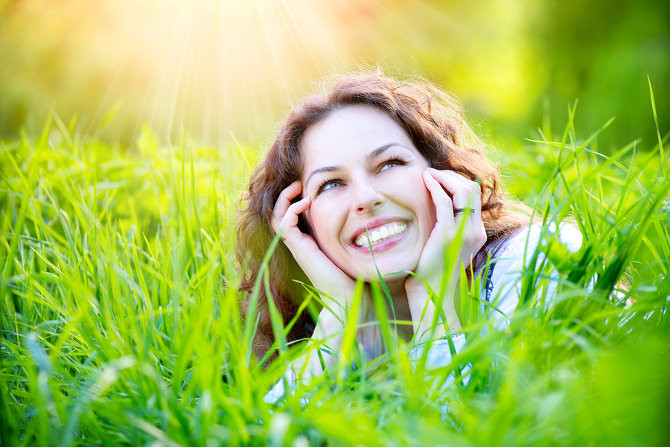

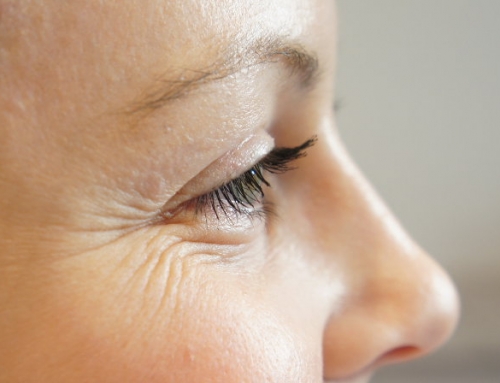
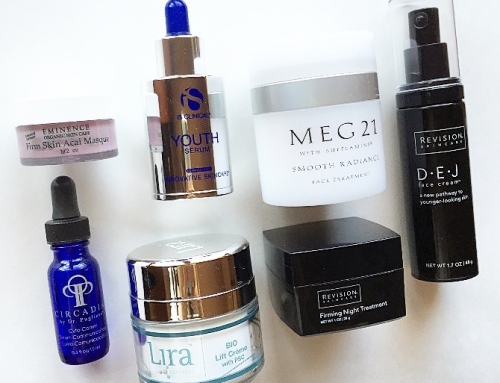

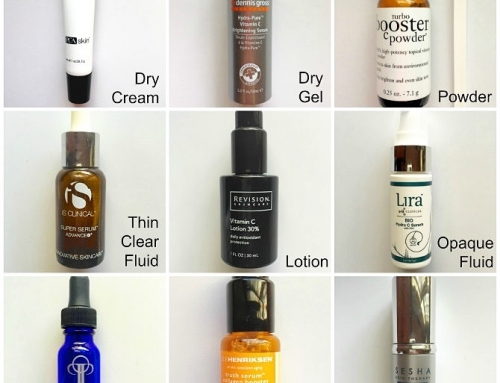

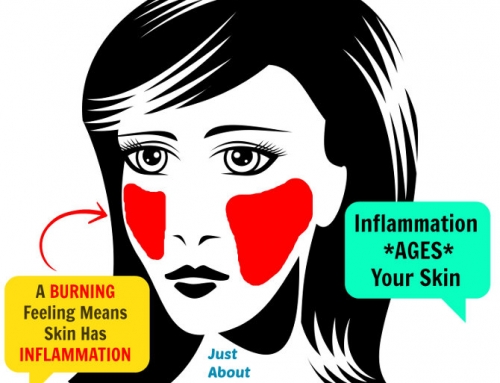
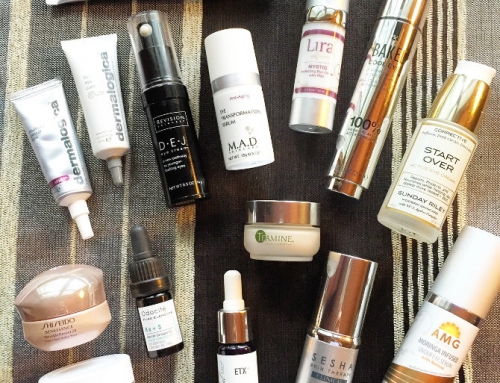

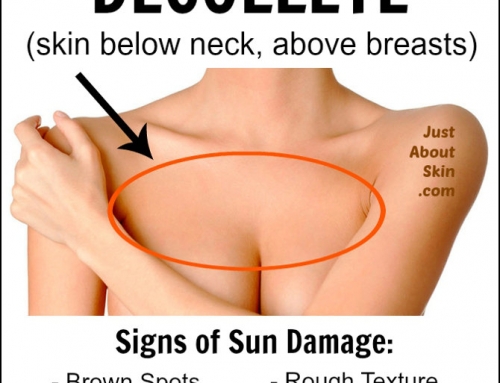
which sunscreen do you recommend for daily use? thanks 🙂
See my Sunscreen recommendations here.